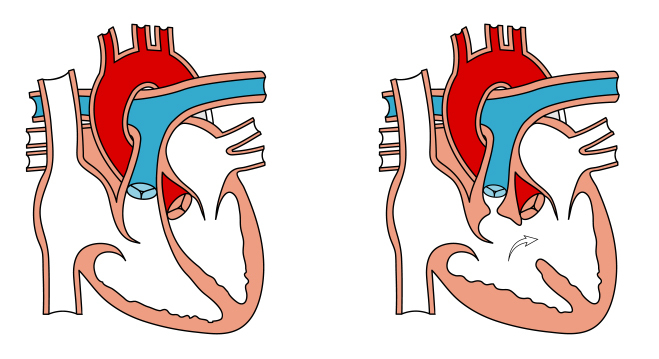Right Ventricular Remodeling Might be Adaptative in Idiopathic Pulmonary Arterial Hypertension

 Researchers at the School of Medicine at Sapienza University of Rome found that Concentric hypertrophy in the heart right ventricle might represent a favorable adaptive pattern to increased afterload in idiopathic pulmonary arterial hypertension. The study, entitled “Right ventricular remodeling in idiopathic pulmonary arterial hypertension: adaptive versus maladaptive morphology,” was recently published in the Journal of Heart and Lung Transplantation.
Researchers at the School of Medicine at Sapienza University of Rome found that Concentric hypertrophy in the heart right ventricle might represent a favorable adaptive pattern to increased afterload in idiopathic pulmonary arterial hypertension. The study, entitled “Right ventricular remodeling in idiopathic pulmonary arterial hypertension: adaptive versus maladaptive morphology,” was recently published in the Journal of Heart and Lung Transplantation.
Despite the fact that increased pulmonary pressure is instigated by changes in the pulmonary vasculature, recent evidence has shown that idiopathic pulmonary arterial hypertension (IPAH) prognosis is associated with the function of the right ventricle (RV).
[adrotate group=”4″]
To further assess which could be the best RV adaptive remodeling pattern to increased afterload in IPAH, the team of researchers led by Roberto Badagliacca, MD, PhD, Department of Cardiovascular and Respiratory Science, examined a total of 60 patients with IPAH, RV morphologic and functional features. The assessment involved echocardiography and cardiac magnetic resonance imaging.
To evaluate which could be the best RV adaptation pattern, the researchers evaluated the patients in two separate groups, and compared the median value of RV mass/volume ratio for RV remodeling and systolic function, World Health Organization class, pulmonary hemodynamics, and 6-minute walk test.
[adrotate group=”3″]
Findings revealed that the group of IPAH patients that had eccentric hypertrophy had worse results in World Health Organization class in the 6-minute walk test, hemodynamics, RV remodeling, and systolic function parameters compared with the group of IPAH patients with concentric hypertrophy.
Concentratic hypertrophy is related to increased pressure overload of the heart that causes a decreased in ventricular compliance and diastolic dysfunction, ultimately causing ventricular failure and systolic dysfunction.
Furthermore, the results showed that those with concentric hypertrophy had higher RV to pulmonary arterial coupling compared to the group with eccentric hypertrophy, suggesting higher RV efficiency.







